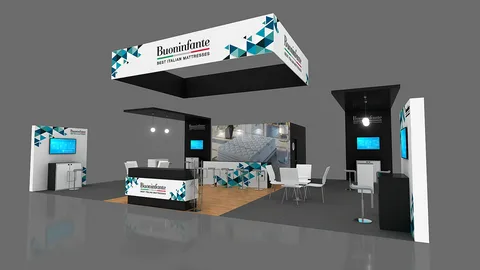Trade show booth design is a critical aspect of any successful exhibition or marketing event. At its core, it refers to the visual and functional design of a space where a company showcases its products or services to potential clients. Often, it involves a combination of strategically designed structures, attractive displays, interactive elements, and effective branding that together create an inviting and engaging environment for attendees. (Visit: Trade Show Booth Design)
For businesses looking to make an impact, the way they present themselves at trade shows can be as significant as the quality of their products — often even more so. A well-designed trade show booth can attract attendees, facilitate meaningful interactions, and ultimately lead to increased sales or partnerships.
The Importance of Trade Show Booth Design
The significance of trade show booth design cannot be overstated. A well-thought-out booth can enhance a company’s visibility and brand recognition. It serves as a physical representation of the company’s image and values. A unique design speaks volumes about the brand’s identity, whether it aims to project innovation, reliability, or luxury.
For instance, consider how tech companies like Apple or Samsung utilize minimalist designs with clean lines and high-quality materials to communicate sophistication and cutting-edge innovation. This kind of design not only attracts foot traffic but also creates a memorable experience that potential customers will associate with the brand. To explore the nuances of effective booth design and strategies, professionals can benefit from services offered by experts like Woodpecker Global, which can guide businesses in optimizing their booth for maximum impact.
Key Aspects of Trade Show Booth Design
Creating a successful trade show booth involves several critical elements:
- Branding and Messaging: Effective booth design starts with clear branding. All components of the booth, from the color scheme to the logo placement, should reflect the company’s identity. Strong messaging should communicate trade show booth design who you are, what you offer, and why it matters.
- Layout and Flow: The physical arrangement of booth elements influences how attendees engage with your space. A well-planned layout facilitates movement and encourages interaction. Open designs with distinct areas for product demonstration, discussions, and information retrieval can help maximize engagement.
- Visual Elements: High-quality visuals — including graphics, banners, and video displays — can capture the attention of passing attendees. Effective use of color and lighting can further enhance the attractiveness of the booth.
- Interactive Features: Attendees are more likely to engage with booths that offer something interactive. From touch-screen displays to product sampling, thoughtful interactivity encourages visitors to stay longer and fosters a deeper connection with the brand.
- Sustainable Practices: With growing awareness of environmental issues, incorporating sustainable materials and practices into booth design is not only ethical but can also resonate well with eco-conscious attendees. Brands can enhance their image by demonstrating their commitment to sustainability, using recycled materials or energy-efficient lighting.
Overcoming Challenges and Misconceptions
Despite its importance, many businesses face challenges when it comes to trade show booth design. One common misconception is that a bigger booth is a better booth. While size can offer more visibility, an overly large space can feel empty or overwhelming if not designed strategically. It’s essential to focus on quality rather than quantity—effective use of a smaller space can be just as impactful.
Another challenge is the perception that only large companies can afford an impressive booth. Innovative booth design can be accomplished on various budgets, allowing companies of all sizes to make a statement. Collaborating with experienced designers or utilizing rental services for booth components can help minimize costs while still achieving a professional and attractive display.
Implementing Trade Show Booth Design Effectively
To effectively implement trade show booth design, consider the following practical advice:
- Start Early: Planning should begin months in advance. This allows time for brainstorming, prototyping, and making necessary adjustments. A rushed design can lead to critical oversights and missed opportunities.
- Set Clear Objectives: Define what success means for your trade show participation. Whether it’s generating leads, building brand awareness, or networking, aligning your booth design with these goals will guide your decisions.
- Research and Understand Your Audience: Knowing your target demographic is essential. What draws their attention? What types of engagement do they prefer? Customizing your booth design to suit the preferences of your audience can significantly improve outcomes.
- Test Your Design: If possible, use mock-ups or 3D models to visualize your booth before the event. This not only helps you spot potential design flaws but also allows for early feedback from team members or potential customers.
- Follow Up Post-Event: After the trade show, follow up with leads generated from your booth. A prompt and personalized outreach can capitalize on the interest cultivated at the event.
In conclusion, trade show booth design is more than just aesthetics; it is a strategic tool that can influence consumer perceptions and drive business success. By considering the key elements, addressing common challenges, and implementing effective strategies, companies can create impactful booth designs that resonate long after the event concludes.

